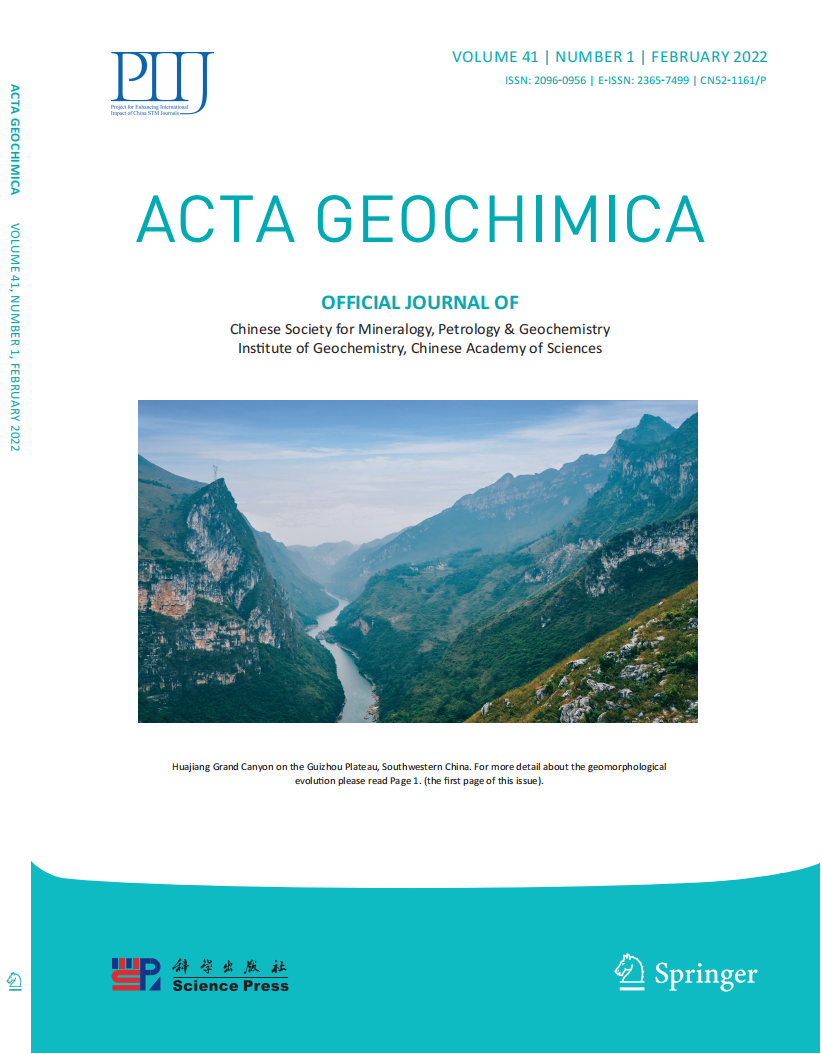- 钛学术文献服务平台 \
- 学术期刊 \
- 基础科学期刊 \
- 化学期刊 \
- 地球化学学报(英文)期刊 \
How to estimate isotope fractionations of a Rayleigh-like but diffusion-limited disequilibrium process
How to estimate isotope fractionations of a Rayleigh-like but diffusion-limited disequilibrium process
原文服务方:
地球化学学报(英文)
摘要:
The Rayleigh distillation isotope fractionation(RDIF) model is one of the most popular methods used in isotope geochemistry. Numerous isotope signals observed in geologic processes have been interpreted with this model. The RDIF model provides a simple mathematic solution for the reservoir-limited equilibrium isotope fractionation effect. Due to the reservoir effect, tremendously large isotope fractionations will always be produced if the reservoir is close to being depleted. However, in real situations, many prerequisites assumed in the RDIF model are often difficult to meet. For instance, it requires the relocated materials, which are removed step by step from one reservoir to another with different isotope compositions(i.e., with isotope fractionation), to be isotopically equilibrated with materials in the first reservoir simultaneously. This ‘‘quick equilibrium requirement'' is indeed hard to meet if the first reservoir is sufficiently large or the removal step is fast. The whole first reservoir will often fail to re-attain equilibrium in time before the next removal starts.This problem led the RDIF model to fail to interpret isotope signals of many real situations. Here a diffusion-coupled and Rayleigh-like(i.e., reservoir-effect included) separation process is chosen to investigate this problem. We find that the final isotope fractionations are controlled by both the diffusion process and the reservoir effects via the disequilibrium separation process. Due to its complexity, we choose to use a numerical simulation method to solve this problem by developing specific computing codes for the working model.According to our simulation results, the classical RDIF model only governs isotope fractionations correctly at the final stages of separation when the reservoir scale(or thickness of the system) is reduced to the order of magnitude of the quotient of the diffusivity and the separation rate. The RDIF model fails in other situations and the isotope fractionations will be diffusion-limited when the reservoir is relatively large, or the separation rate is fast. We find that the effect of internal isotope distribution inhomogeneity caused by diffusion on the Rayleigh-like separation process is significant and cannot be ignored. This method can be applied to study numerous geologic and planetary processes involving diffusion-limited disequilibrium separation processes including partial melting,evaporation, mineral precipitation, core segregation, etc.Importantly, we find that far more information can be extracted through analyzing isotopic signals of such ‘‘disequilibrium''processes than those of fully equilibrated ones, e.g., reservoir size and the separation rate. Such information may provide a key to correctly interpreting many isotope signals observed from geochemical and cosmochemical processes.

推荐文章
Diffusion in garnet: a review
High temperature and high pressure
Diffusion
Garnet
Point defects
Vital effects of K isotope fractionation in organisms: observations and a hypothesis
K isotopes
Isotope fractionation
Vital effects
A hydrochemical approach to estimate mountain front recharge in an aquifer system in Tamilnadu, Indi
Mountain-front recharge
Geostatistical tools
Hydrogeochemical facies
Ionic ratio
Anthropogenic processes
内容分析
关键词云
关键词热度
相关文献总数
(/次)
(/年)
文献信息
| 篇名 | How to estimate isotope fractionations of a Rayleigh-like but diffusion-limited disequilibrium process | ||
| 来源期刊 | 地球化学学报(英文) | 学科 | 地球科学 |
| 关键词 | |||
| 年,卷(期) | 2023,(1) | 所属期刊栏目 | |
| 研究方向 | 页码范围 | 24-37 | |
| 页数 | 14页 | 分类号 | |
| 字数 | 语种 | 中文 | |
| DOI | |||
五维指标
版权信息
全文
- 全文.pdf
引文网络
引文网络
二级参考文献 (0)
共引文献 (0)
参考文献 (0)
节点文献
引证文献 (0)
同被引文献 (0)
二级引证文献 (0)
2025(0)
- 参考文献(0)
- 二级参考文献(0)
- 引证文献(0)
- 二级引证文献(0)
引文网络交叉学科
相关学者/机构
期刊影响力
地球化学学报(英文)
主办单位:
中国科学院地球化学研究所
出版周期:
双月刊
ISSN:
2096-0956
CN:
52-1161/P
开本:
大16开
出版地:
贵州省贵阳市观水路46号地球化学研究所
邮发代号:
创刊时间:
1982-01-03
语种:
英文
出版文献量(篇)
294
总下载数(次)
0
期刊文献
相关文献
推荐文献
- 期刊分类
- 期刊(年)
- 期刊(期)
- 期刊推荐

 免费查重
免费查重










